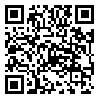Background & Aim: Communication is one of the basic concepts which nursing students must learn. Nurse instructors&apos behaviors have key role on effective clinical education. The aim of this study was to assess the effect of situational leadership model on nursing students&apos communication competency.
Methods & Materials: In this before-after trial, we recruited the students who had medical & surgical practicum in the second semester and summer of 1385-86 in public hospitals in Arak. They were selected randomly and then allocated to case (n=40) and control (n=35) groups. In the first week of practicum (before), we measured the students&apos communication competency using a self-structured questionnaire. For intervention, we defined behavioral objectives and designed a diagnosis form for identifying level of maturity and a feedback form for the students. After orientation of the students with behavioral objectives, we accompanied with main instructors based on their maturity levels in caring and applied effective leadership style. Along with the practicum period, we supervised the students&apos level of maturity in different nursing care skills. In the end (after), we measured the students&apos competency. We analyzed the data in SPSS, version 13.
Results: The results showed that there was significant difference before and after the intervention (P<0.001). Also, there was significant difference between two groups (P<0.001). Self-evaluation showed no significant differences between students&apos competency in two groups (P=0.335).
Conclusion: The situational leadership model would promote nursing students&apos communication competency.
| Rights and permissions | |
 |
This work is licensed under a Creative Commons Attribution-NonCommercial 4.0 International License. |


